Imagine my excitement when I heard there was a little town, Kumano, which was deemed THE brush capital of Japan and found out there were more than eighty brush makers still making brushes traditionally, a brush festival, a national calligraphy competition, a “day of the brush” week held there yearly AND a brush museum… Had to go, right? Yes, of course.
So now imagine our slight dismay as the -kind enough- coach driver, let us off at a crossroads of two country lanes with a very vague indication, that yes, yes it’s up there. To our right… fields, on our left… fields, downhill… fields. Uphill, we go! After a good kilometre a faint indication that we might be getting… somewhere turns up in the most unexpected shape of a water manhole. Oh, well, you know, in desperation anything will do! Surely these were brushes…
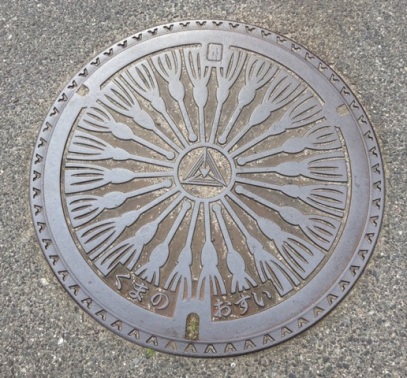
And, sure enough, some three kms later, round a bend, what greets us is this most imposing and modern structure: the Fudenosatokobo, Hiroshima Prefecture, brush museum!
The astonishment of the ticket seller at seeing two panting gaijins turn up at her booth is equal to ours at having found this most improbable of places! And what a place. It is simply beautiful. Displays of gorgeous brushes, recent and venerable, made for artists and make-up artists alike, calligraphy artworks, a live brush maker and painter on silk, a very alluring shop, videos and pamphlets… The works! And, as you would have it, the biggest brush in the world (3,7 metres).
We spend a good two hours musing there and are then told to simply walk down further to find the old village and all its traditional workshops. We make our way to the one recommended as being the most ‘artistic’ and, like a beautiful flower that gives more and more fragrance, are not only delighted to find a lovely store full of the best brushes but are allowed to climb upstairs to the actual place they are made!
And, you know what? It was really a good idea I didn’t write or commit to having any knowledge before on oriental brushes… They are not made anything like at Escoda’s place I visited in Spain, nor for the same usage, nor from the same hairs, perhaps not even in the same spirit (an elusive notion I realise but one I felt very strongly in this animist country…. Dare I mention that there is even a “Brush Grave” in Kumano erected “to express gratitude to the spirits of brushes, Fude no Kokoro, and for the blessings of ancestors” and that once a year, during the Brush festival, they do a ritual cremation of old brushes sent from all over Japan to “honour their souls and the work they have done”!)
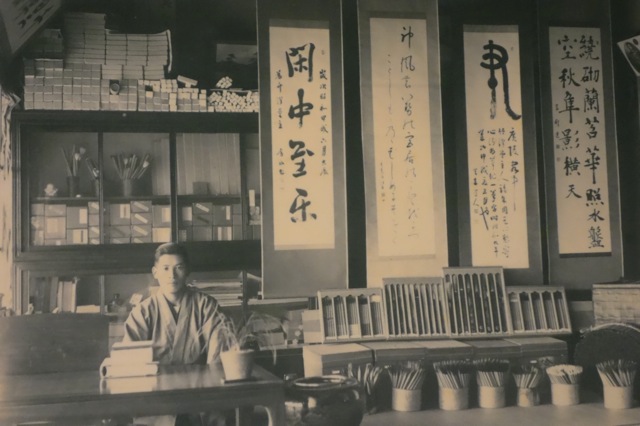
When you’re born and bred in Paris you kind of expect everything to have been around for awhile, you know, as in a few centuries, but when you find out washi (paper) has been made in Japan for 13 centuries you’re pulled back in time somewhat more. Because who says paper, says ink (read my post from two months ago if you haven’t) and says brush… Right? And should I mention here ink stones as they are, after all, and as modest as you might think them, the fourth of the Four Treasures of the Writing Table…
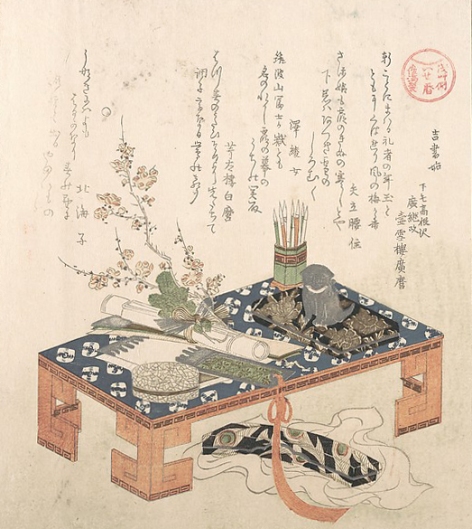
Over time, brush makers developed an amazing array of shapes, ingredients and know how all over Japan. But it is recent circumstances rather than tradition that has made Kumano the place where 80% of brushes are produced as brush making here only dates back to the 1840’s. This area had little arable land and so men had to go away to find work, sometimes as far as Nara, from where they would bring back brushes and sell them until the day the idea came to them to try and make some themselves, combining the best techniques they had seen elsewhere. The recipe was good and now nearly 2000 people in Kumano work in the brush business and -even if they have turned to make-up brushes, as in France, to survive- they still hand produce over 15 million brushes a year here!
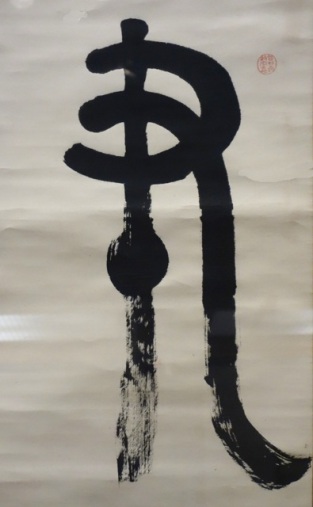 As you probably know already, inks, watercolours, any waterborne paint in fact, is happier with a softer brush and one which “drinks” water better than a hog hair or one of the stiffer synthetics ones. In the west we have come up with the squirrel ‘mop’ brush or the sable (rounds usually) as suitable for the purpose. But even these do not drag the ink as far as a calligrapher of ‘characters’ might wish or need to go. They might, too, not have enough control… Because, actually, it is really hard to write with a brush! Not to mention excel in relaxed Zen spontaneity, that sophisticated art of artlessness, of the ‘controlled accident’.
As you probably know already, inks, watercolours, any waterborne paint in fact, is happier with a softer brush and one which “drinks” water better than a hog hair or one of the stiffer synthetics ones. In the west we have come up with the squirrel ‘mop’ brush or the sable (rounds usually) as suitable for the purpose. But even these do not drag the ink as far as a calligrapher of ‘characters’ might wish or need to go. They might, too, not have enough control… Because, actually, it is really hard to write with a brush! Not to mention excel in relaxed Zen spontaneity, that sophisticated art of artlessness, of the ‘controlled accident’.
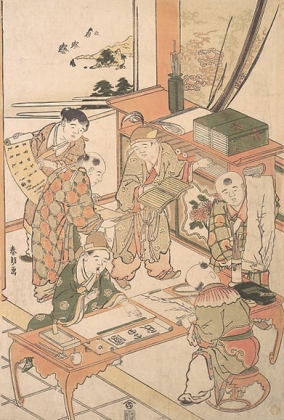
What brush makers have in common though is fastidiousness. Hairs, any kind, have a way of twisting and hiding so there’s always a loose one, a longer one to be hunted, brought in line or eliminated. (Even hairdressers seem to always miss that one cheeky hair or little strand, have you noticed?) In Spain, the hairs arrive at the factory all clean and sorted in neat little bundles but in Kumano they really start from scratch, handfuls of animal hairs that first need to be all aligned the proper way -only the natural tip has the correct spring- and then rid of their animal grease. That first step is painstakingly done by one lady here today. Then another takes over and hand rolls small quantities of hair with rice husk ash -the same grey soft powder used to dry ink sticks. This operation is done quite a few times, then rolled into a cloth, the little bundles will go under a hot press that will help release more grease yet. Although all these operations could be somewhat repetitive, a sweet peaceful atmosphere prevails and all the ladies chat and chuckle as they work.
The hairs are…

Do you really want to know? Oh, OK, here we go then: dog, wild boar, Persian cat, horse, pig, fowl (for decorative feathers at the top or even entirely made of those!), mouse, rabbit, deer, raccoon, badger, squirrel, goat (and more specifically its goatee, chest and long upper leg hairs)… Yes, for our purpose we have used all that we could, all over the world!
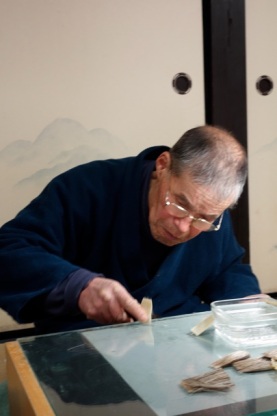 When ready to use, the hairs are cut at their base to the desired length and, as elsewhere where good brushes are made, these are aligned, combed and loose hairs are pulled out. But they are not shaped into tufts to produce a point, rather stretched in a long zigzag row which will wrap around either itself or, tricks of tricks, will wrap around an inner brush of stronger hairs (let’s say horse) while the outside one might be of longer and floppier hairs (like goat). This way, as you press your brush on paper, first will be released the ink from the outer hair, then the resistance of the inner hair will allow you to go further, with more control, and then the longer hair can take over again as you release your brush and the tail of the floppy hairs caresses the paper.
When ready to use, the hairs are cut at their base to the desired length and, as elsewhere where good brushes are made, these are aligned, combed and loose hairs are pulled out. But they are not shaped into tufts to produce a point, rather stretched in a long zigzag row which will wrap around either itself or, tricks of tricks, will wrap around an inner brush of stronger hairs (let’s say horse) while the outside one might be of longer and floppier hairs (like goat). This way, as you press your brush on paper, first will be released the ink from the outer hair, then the resistance of the inner hair will allow you to go further, with more control, and then the longer hair can take over again as you release your brush and the tail of the floppy hairs caresses the paper.
The major other difference in the making of an oriental brush is that they don’t use glue because natural hairs when burnt in tight little bundles like these ideally singe to form a dry firm crust. As she scorches them, the lady ties them with a linen string that went through her mouth and that wet string will tighten them further as the string dries. The little garlands of brush tips thus produced are ever so sweet but although they were not doing it that day, the lady in charge of it (and on the poster as she has been recognised with the title of “National treasure in craftsmanship”), showed me all the steps and it’s a full on operation I can tell you. (Plus it apparently doesn’t just stink, it stinks like Osaka fish… and that sounded ultra vile!)
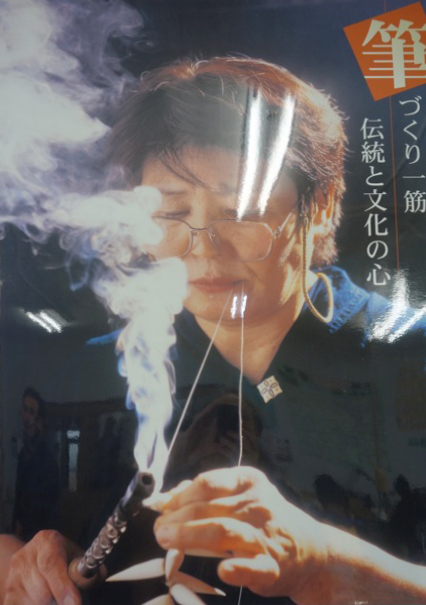
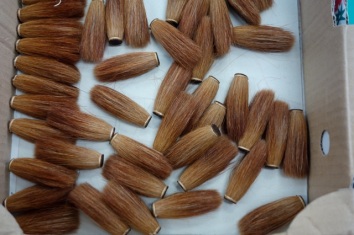
Oriental brushes are generally made with much longer tips, suitable for ink work, and are held straight, not horizontally, above the support. They also come in sizes incomparable to those used in normal ink or watercolour work. For the simple brushes, the tips are usually inserted directly into wood or bamboo handles (sometimes with a plastic ferule of sorts). However, for all the larger and more precious ones they go into specially sculpted, sometimes lacquered, wood or even stone casings that are attached to the handle.
Of course there are so many types of brushes made in Japan that what I saw that day is only the tip of the brush if I may say. Other techniques must exist for specific shapes and results but… this is what I know for now… thanks for reading and being patient as I gather my little bits of hands-on knowledge! And, if anything was a little lost in translation, as the saying goes: “koubou ni mo fude no ayamari” (Even Buddhist teachings scrolls have brush slips).*
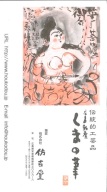
Fudenosatokobo Brush Museum, 5-17-1 Nakamizo, Kumano-cho, Aki-gun, Hiroshima Prefecture; and the brush factory I visited in Kumano is called Houkodou, email: info@houkodou.jp
* Of course this last one is a real Japanese proverb, whereas my title was just a parody of the famous one about human travels and endeavors…
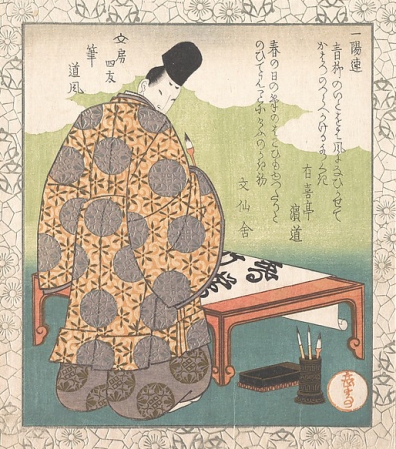
Discover more from in bed with mona lisa
Subscribe to get the latest posts sent to your email.




















Great post Sabine,excellent reading. sometimes a little hard to read through the photos. Love the image of the brush, the ink mark looks like wood texture.
many thanks
sara
Yes a little tech glitch here as it I fine on the website but the email got them all scrambled… am trying to fix this for next times but getting tech support is not obvious!
What a beautiful place, even the manhole cover is beautiful. And what stunning brushes, they are objets d’art themselves. Such craftsmanship…thank you for sharing this!
Absolutely fascinating. Thanks for sharing your finds on your journey.
Maritza
It’s my greatest pleasure too and makes my travels so much more fun and interesting!!
Whoa, whoa, get out the way with that good iniafmotron.
I love reading about the origins and craftsmanship behind all our tools. What an amazing adventure. Thanks for passing these incredible stories on for us to be inspired.
Denis
Thanks Denis… It’s really my pleasure to do so!
Very enjoyable read, such an interesting story and inspiring.
Rose
Thank you Rose…
Great story and information – had no idea how they made brushes and how technical it can be. Love the old traditions that keep on going.
Wonderful writing and photos Sabine. So much I never knew about brushes…all remedied now 🙂
Thank you so much.
Lynne
Thank you!
s
With few exceptions, travel logs tend to drag one through one historic town after another, often making the journey tiresome and calling into question one’s desire to visit foreign shores, altogether.
But, your description of Kumano with its inhabitants of brushes and artisans made my journey, metaphorically speaking, a delight. It awakened in me an interest in the splendor and history of Japanese brush-making. The Japanese appear to possess an understanding of the concept of a “vocation” – a calling. Their way of life is reflected in the gentle, dedicated way in which they practice he tea ceremony, the build and tend their rock gardens, they arrange their Ikebana, prune their bonsai, scribe their calligraphy and practice Sumi-e brush painting. Even their homes reflect their life’s work.
I, now 74, have begun my study in Sumi-e. Your article helps me to appreciate my little collection of bamboo- handled brushes. There in one in particular that sat quietly wrapped in my bamboo carrying case. My mother gave it to me years ago when she no longer felt like painting. Though I treasure it, I never used it. Then one day out of desperation, since all the other brushes seemed intent on frustrating my efforts to write bamboo, I turned to that one little brush. I wish I could thank those who lovingly and expertly crafted my little treasure for a present this is the only brush I am using. It truly is alive and working hard to teach me.
Thank you,
Cecelia
Oh thank you heaps Cecelia I am so happy you have enjoyed reading this and now enjoy your very special brush even more… these are made for using, painting, writing… even if one day they end up in the brush grave they -as we do- need to live the life we have come here to dance! And yes reverence can come into to the dance too and make it so much more special…
I actually bought a new iPhone 12 to play ‘catch-up’ with the world around me… so much is changing so fast… I would love to buy some Japanese brushes from that village… so a I will… thank you🥰💕✅
You might have to learn Japanese! These brushes are not sold in Australia, nor is much of their literature available in English! Let me know if you manage this.